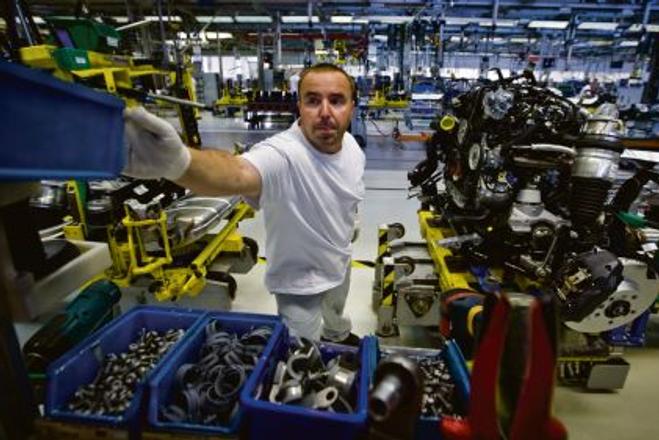SLOVAKIA’S economy exceeded the expectations of market watchers when in the first quarter it grew by 2.4 percent year-on-year. Compared to its performance in the last quarter of 2013 when it grew by 1.5 percent, the flash estimate released by the statistics authority on May 15 represents a rather significant acceleration. Though detailed numbers are not available, analysts attribute the rosier results to growing household consumption, foreign trade and government spending.
The flash estimate also confirmed the continuing revival of the Slovak economy during the first quarter of 2014, said Andrej Arady, macroeconomist with VÚB Bank, with Ľubomír Koršňák, analyst with UniCredit Bank Czech Republic and Slovakia, calling it a positive surprise, as the market had expected GDP growth at only 1.6 percent.
After seasonal adjustment the GDP rose by 2 percent as compared to the first quarter of 2013 and by 0.6 percent quarter-on-quarter. The volume of GDP in current prices reached €17.022 billion, 1.9 percent up compared to the same period in 2013, the Slovak Statistics Office said. The detailed structure of the economic growth will be published on June 4.
Components and household consumption are likely to have significantly contributed to the growth, as indicated by growing retail revenues, which went up 4.3 percent y/y in the first quarter, wrote Martin Baláž, analyst with the Slovenská Sporiteľňa, in a memo.
The revival of firms’ investments, which started in the previous quarter, might have continued as well, Baláž said, adding that foreign trade also made a positive contribution.
“The growth might have also been supported by government spending,” Baláž wrote.
Koršňák suggests that private investments could have bottomed out and moved upward as indicated by loans provided by banks to non-financial companies, which ceased dropping in the first quarter.
“On the other hand, weaker results in the construction sector at the beginning of the year, mainly in the segment of construction of infrastructure, might signal that public investments did not continue their revival from the end of last year and returned to a decline,” Koršňák wrote in a memo.
Koršňák, too, assumes that net exports continued to contribute to the growth, with mainly export-oriented branches fuelling the economy.
Yet, its contribution to growth will no longer be as significant as in 2012 and the first half of 2013, since “the stronger domestic demand is pushing up imports as well”.
According to Arady, the development of prices brought surprises, since the drop in prices significantly inflated the numbers of real GDP growth.
Employment sees feeble improvement
The total number of employed grew to 2.2 million in the first quarter of 2014 and grew 0.5 percent compared with the same period in 2013. Seasonally adjusted employment rose by 0.3 y/y and 0.2 percent compared to the previous quarter.
Nevertheless, Baláž noted that growth in employment is still slower than the numbers provided by the labour authority, the Central Office of Labour, Social Affairs and Family (ÚPSVaR), “which perhaps is linked to the continued departure of the unemployed abroad”.
Real growth in labour productivity in the first quarter has accelerated from 1.5 percent to 1.9 percent, Koršňák noted, adding however that in nominal terms it stagnated at 1.4 percent.
Yet, monthly statistical data suggests that y/y growth of wages in the first quarter mildly accelerated and thus wages might have grown faster than labour productivity, and with the absent inflation the dynamics of the growth of real wages significantly increased, which was also reflected in the more robust growth of domestic consumption.
Koršňák said that as a result of the surprisingly strong numbers, his bank will revise its GDP estimate for 2014 slightly up from 2.9 percent to 3.0-3.1 percent.
“The growth this year should be fuelled both by reviving domestic consumption as well as growing foreign demand,” Koršňák wrote in his memo.
Nevertheless, he sees risks in the prediction mainly due to external factors, namely the escalation of the crisis in Ukraine.
“Our basic scenario does not anticipate its further escalation and thus a more significant impact on European economies,” Koršňák wrote.



 (source: SME)
(source: SME)